This is an interview with Naoto Fukasawa and review of the PlusMinusZero product collection in London. Published in Blueprint Magazine October 2009.
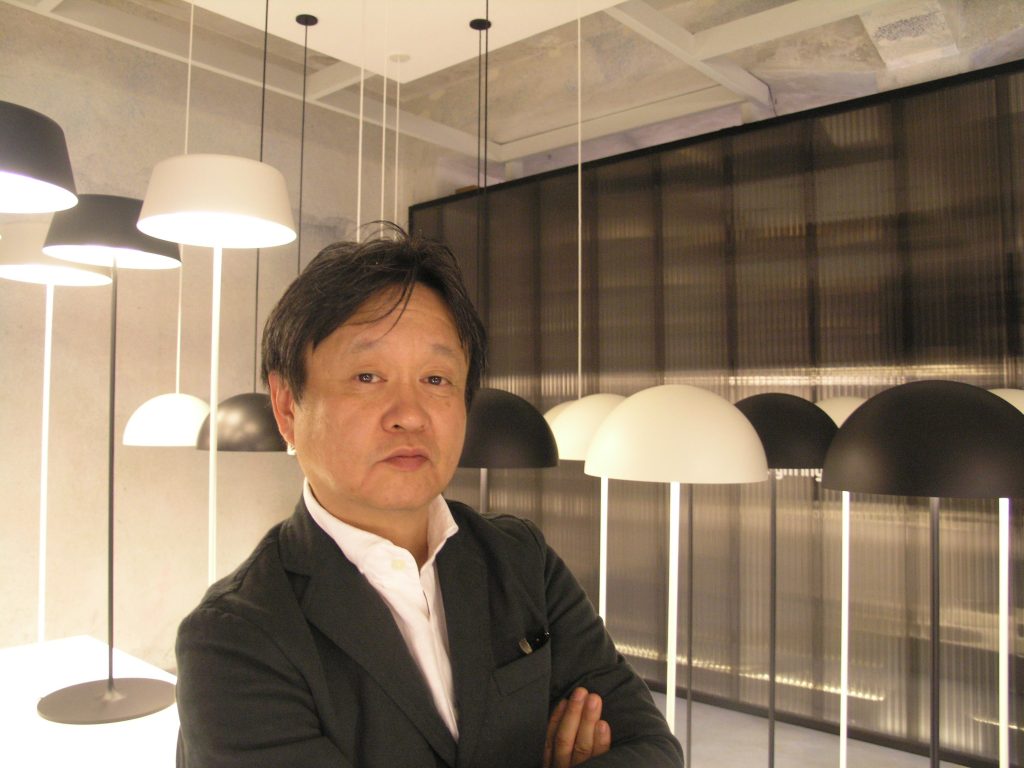
Good news this month for everyone who has lusted after the seductive shapes and flush minimalism that characterises the Plus Minus Zero (PMZ) housewares brand from Japan. Bad news, though, for anyone desperate enough to have made the pilgrimage to the company’s flagship store in Tokyo’s Kita-Aoyama district (“Showing Beautiful Things in a Beautiful Way”) – now anyone can get their hands on these perfectly crafted morsels.
Launched on 22nd September at the design store Twentytwentyone, the PMZ range is to Muji what the Conran shop is to Habitat; a bit more expensive, a bit more exclusive, a bit better made, a bit nicer. Officially described as things that ‘…you have never seen, yet somehow seem at home with,’ or that ‘seem to have already existed, but didn’t,’ I had always assumed that the brand name referred to the quotation by Joseph Joubert that ‘A work is perfectly finished only when nothing can be added to it and nothing taken away.’ This certainly seems to sum up the vision of design director Naoto Fukasawa, who has been widely praised for the integrity and consistency of the range.
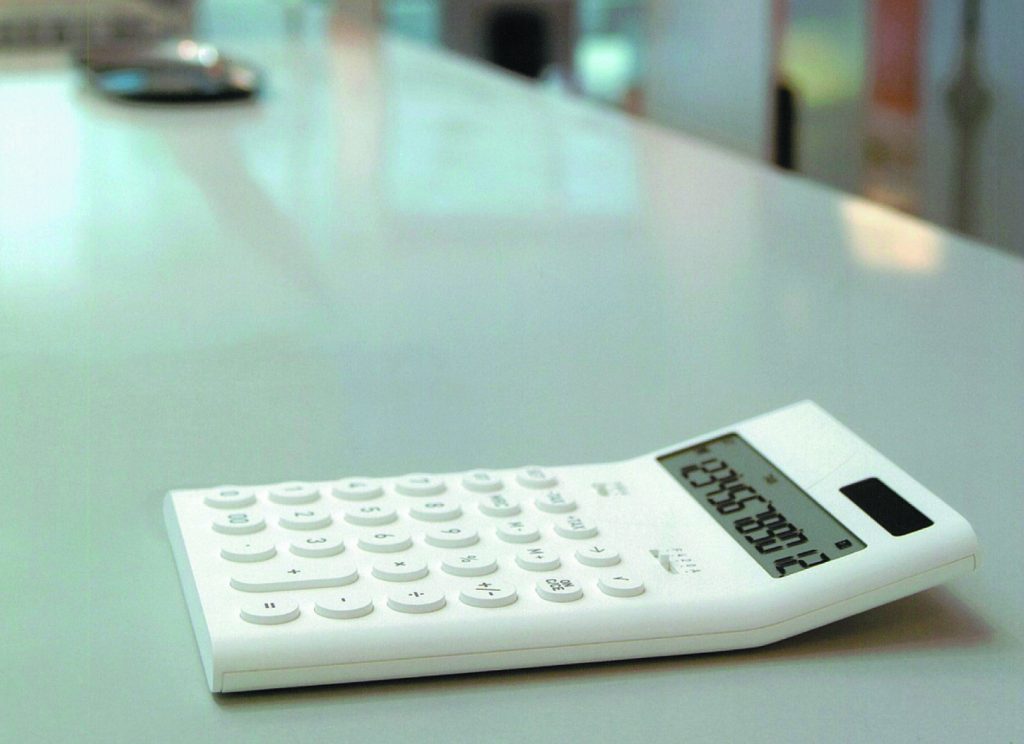
Following the successful hosting of Supernormal, an exhibition celebrating utilitarian design curated by Fukasawa and Jasper Morrison in 2006, Twentytwentyone is set to launch the entire European range of PMZ products. While Supernormal introduced several pieces from the range to a British audience, it hasn’t been available to buy until now. Twentytwentyone director, Simon Alderson describes how it came about: “We were familiar with Naoto’s work and the collection as it stood in 2006, but it was the time spent with Naoto during the set-up and after the exhibition that facilitated discussions and the prospect to represent PMZ in the UK. However it’s taken several years to develop the electronic designs to become suitable for the British/European market (voltage and EU Standards). We held off officially launching the collection until these issues were rationalized as we feel the collection needs to be understood in context of the electronic designs.” He goes on to sum up their appeal as “An acute attention to detail and form. The designs perform their function in a progressive, faultless manner, whilst being simplified to essential requirements. Naoto’s designs also manifest personality and soul. It’s an incredibly rare combination; a range of functional designs, with timeless, quiet, but modern aesthetics, that are a pleasure to use.”
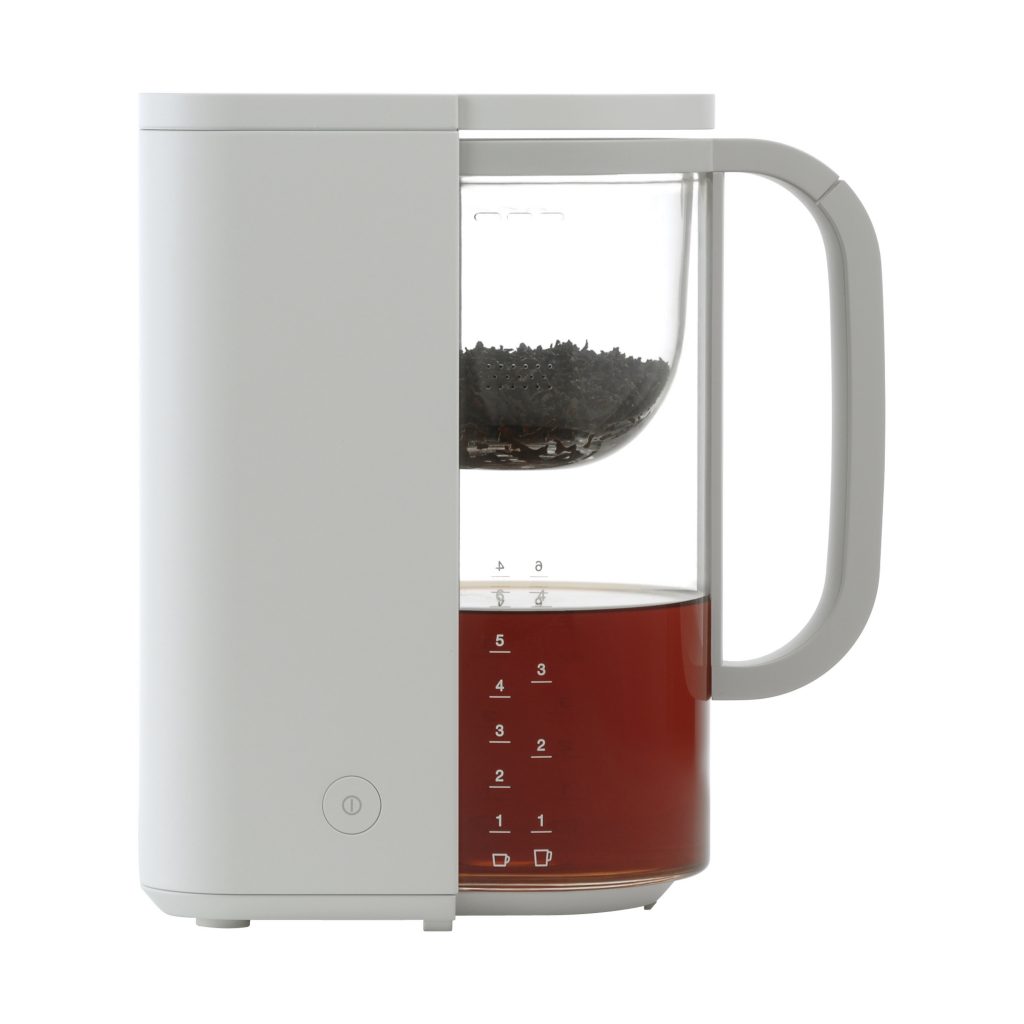
For an industrial designer who made their name it the relative anonymity of technological products, Fukasawa has been extremely successful in his transition to designing furniture, housewares, lighting and accessories for some of the most well known design-led brands around. While perhaps best known for his 1999 wall-mounted-fan-that’s‑a-CD-player for Muji, this year alone he has had products launched from European companies as diverse as Danese, Boffi, B+B Italia, Vitra, Magis and Nava. David Tonge, director of consultancy The Division, who worked with Fukasawa at IDEO in California, describes his former colleague’s gift for design: “In the context of Japan he is a superstar and the reason for this is that he is not only a true craftsman with a sensitivity for the user, but also has a ‘grand idea’ which encompasses not only individual but ranges of products like Plus minus Zero and his work with Muji. This is truly a unique skill in Japan.”
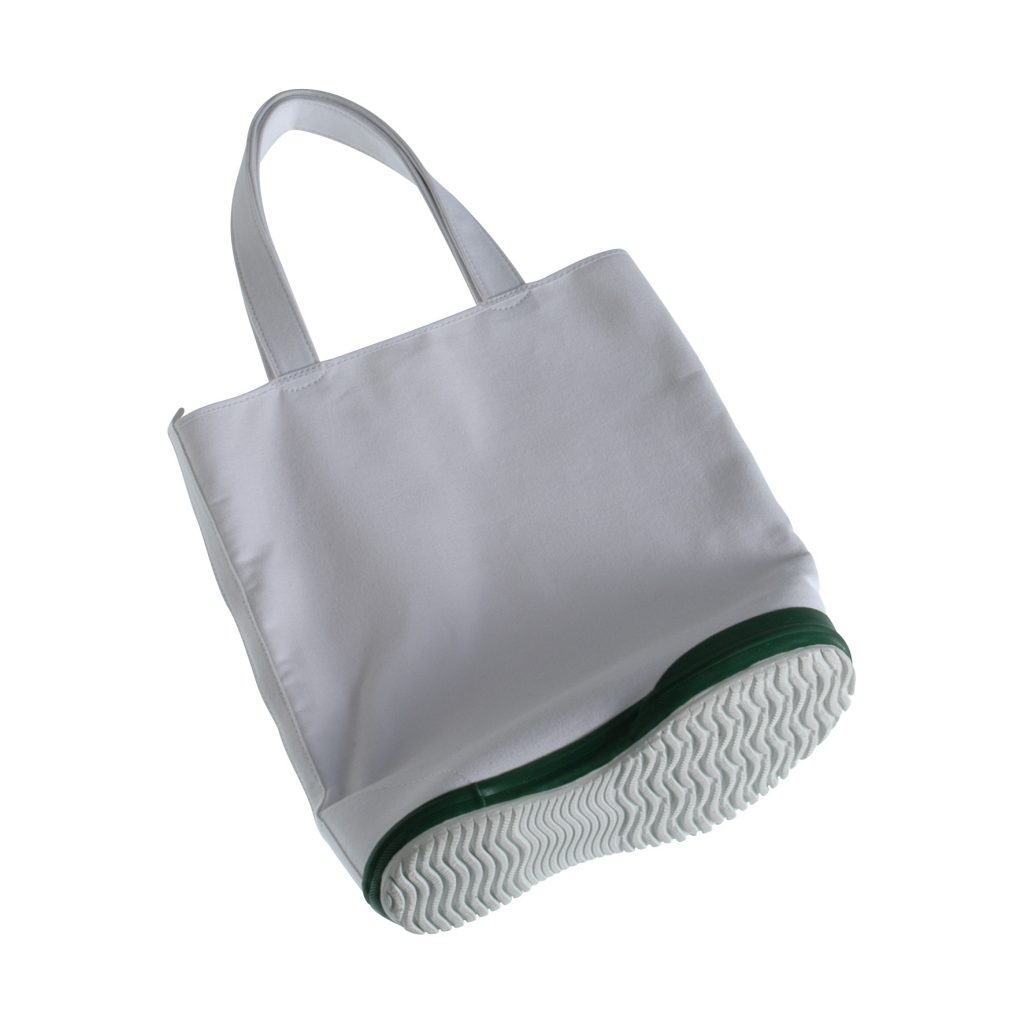
When I met the designer recently, I wanted to ask him about the style for which he has become known. Does he feel that this is essentially ‘Japanese’ in character, or is it a more universal aesthetic, informed through design thinking? “I feel that this is a universal approach, although I cannot ignore the culture in which I grew up. I like the Japanese mentality: the thought, beauty and simplicity that this brings to things, and also the feeling that art can be in the use of an object. Drinking a bowl of tea may be simple, but it can express art in the design of the bowl and the thought in the action. Rather than a painting that hangs on the wall, art can be about using things.” In this consideration of use, and the lack of ‘authorship,’ or ‘signature’ in design, Fukasawa says he feels closer to the modern movement in European design than he does the work of the celebrity designer. Asked to name a peer with whom he feels affinity, he has no hesitation in naming Dieter Rams, the influential figure behind the aesthetic of the German appliance brand Braun; “In industrial design, Dieter Rams has done great work, still does. I feel that a lot of designers made mistakes after he quit Braun [1995]. Even when I see his products now, they still seem fresh and new. He designed tools for people to use – he didn’t design for himself. I feel that a designer has a role not to express his personality or thought, but to be in charge of an object and how it is used. In this way, design is probably closer to what most people think of as engineering.” This, he agrees, might be described as ‘quiet’ design, and is something that he aspires to in his work. “…although you have to see this from a particular point of view. For example Muji is also producing very ‘quiet’ design, but it still manages to catch your eye because of its simplicity and cleanliness. It is all about contrast. If everything looked the same, you wouldn’t notice it! So I should be probably be glad of all the expressive design there is!” By way of explaining the way in which design and authorship struggle with each other, Fukasawa points to the polypropylene case holding my business cards. “I also like this case [by MUJI],” he says, “which is a good design, but when I designed a card case [taking out his own], I wanted to remove the sharp angles at the corner, which I felt were uncomfortable in the hand in and in your pocket. So I added a radius. But this radius is determined by the wall thickness and properties of the material alone, and by the size of the contents. If I give it a bigger radius, then it has a ‘Fukasawa’ character, and I hate this. My role is to design for people who use the product, not for myself.” Given this evidence that he is proud to use his own designs, I wondered if you visited his apartment, would it be full of his work? “No, no – It is a bit embarrassing for me to use my designs in my apartment. I don’t want to show it off! Also if I am a customer, I want to enjoy choosing the work from other designers, like Enzo Mari or Dieter Rams.”
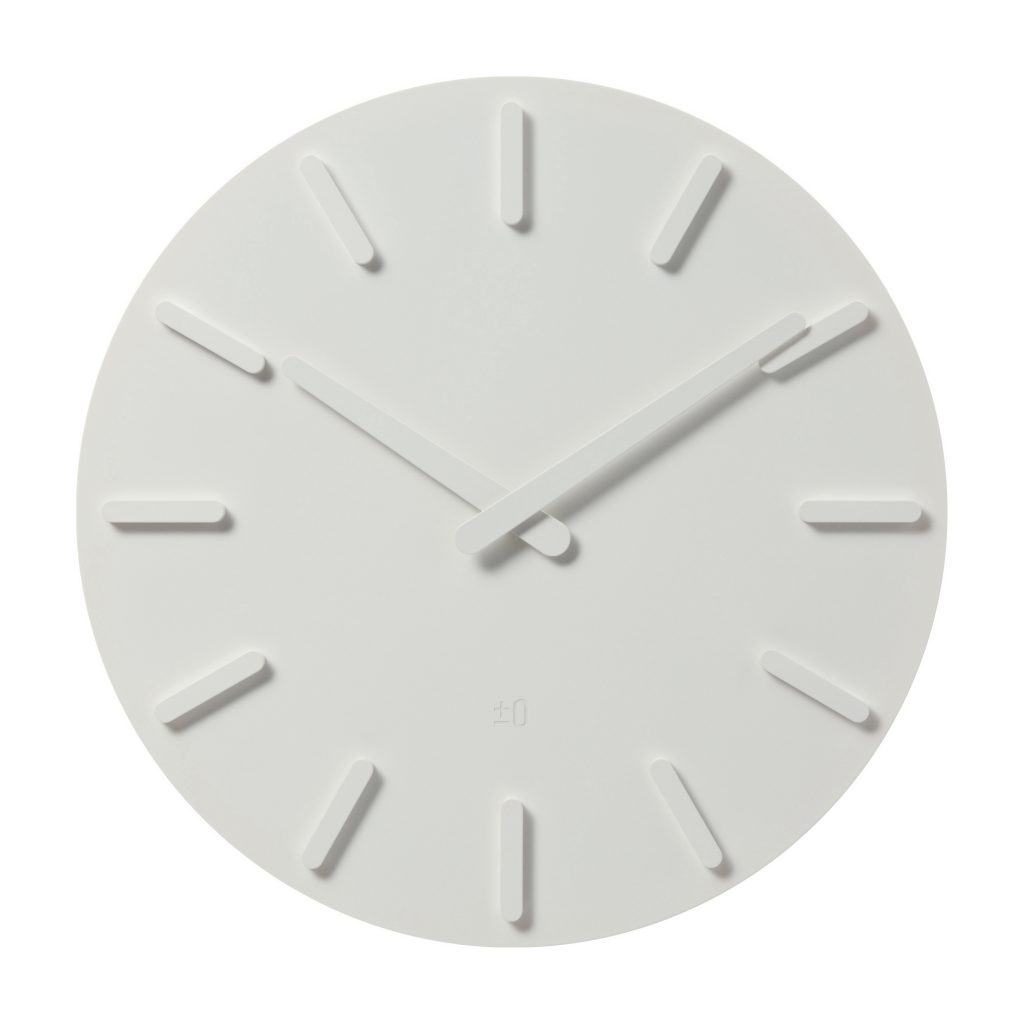
But why should he dislike ‘signature’ design so much? “I know that there is an audience for it, but I don’t like it. I also don’t like it if someone buys something just because it is by Naoto Fukasawa. They should buy something because they like it, not because of who designed it.” This striving for a lack of ‘personality’ in his work might appear at odds with something like the LCD TV for plusminuszero, which appears to be styled after an old-fashioned tube TV set, but actually contains a modern LCD device. This is explained by the designer partly as a joke, but also partly as a comment on the ‘disappearing’ nature of technology. It almost seems that as technology for TV becomes very large and very thin, that the designer is not needed, but I disagree. For this portable TV, it requires a case that allows the user to set it at the correct angle, a soft shape that will not be uncomfortable if, for instance you are watching TV in bed.”
It is hard in some ways to square the designer’s distaste for signature design when he himself has become such a sought-after name, and also his commitment to rationalism when some of the most successful pieces are less than shrouded in logic than one might expect. The Sole Bag, for instance, with its re-appropriated plimsoll base, or the salt and pepper maracas, which need to be ‘played’ rather than ‘used.’ Nevertheless, as fans of Apple under Ive, Braun under Rams or B+O under Jensen will concur, if a consumer brand is to achieve true design approbation it needs to be the unfettered vision of one person. The PMZ collection manages both, and this range is surely destined for ‘classic’ status like so much of Fukasawa’s other work.
Info Box:
Naoto Fukasawa began his design career with Seiko-Epson, later moving to California to work for IDEO. In 1996 he returned to head the IDEO office in Tokyo and in 2003 set up his own consultancy, working with a worldwide client base. The first PlusMinusZero collection, launched the same year, included a DVD/MD stereo component, a 22 inch LCD tv, and the now iconic 8 inch portable TV. The Tokyo concept store opened in October 2004, and the range first introduced to a European market at Maison et Objet, Paris, in September 2008. Included in the European launch are a humidifier; coffee and tea maker; air purifier; heater; fan; calculator (two types); desk clock, timer, thermometer; wall clock; ‘maracas’ cruet; magnets; card case; and ‘sole’ bag. Beyond issues of voltage, some designs such at TV, telephone, audio equipment have proven too expensive to develop to meet European systems. The range is set to expand, with a kettle, bathroom scales, wristwatch and credit-card calculator scheduled for launch in early 2010. Twentytwentyone was founded by Simon Alderson in 1996. The name is intended to marry the company’s background in classic/historical designs from the twentieth century with their enthusiasm for contemporary (twenty first century) design.
Blueprint is media partner for the launch of PMZ in the UK, and for the exhibition of Fukusawa’s work at Twentytwentyone.
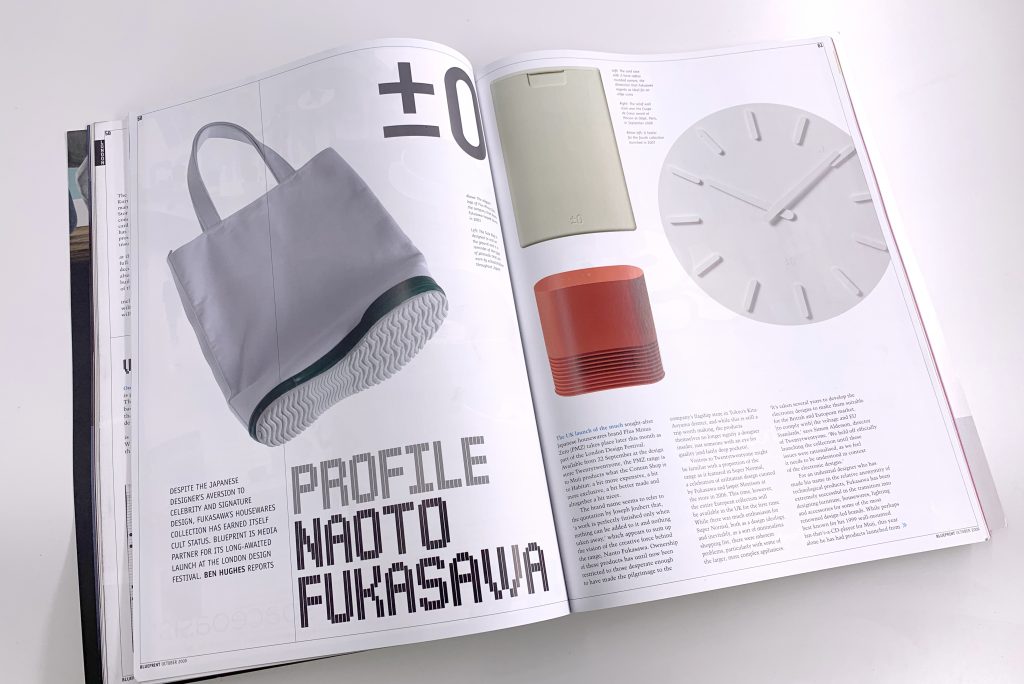
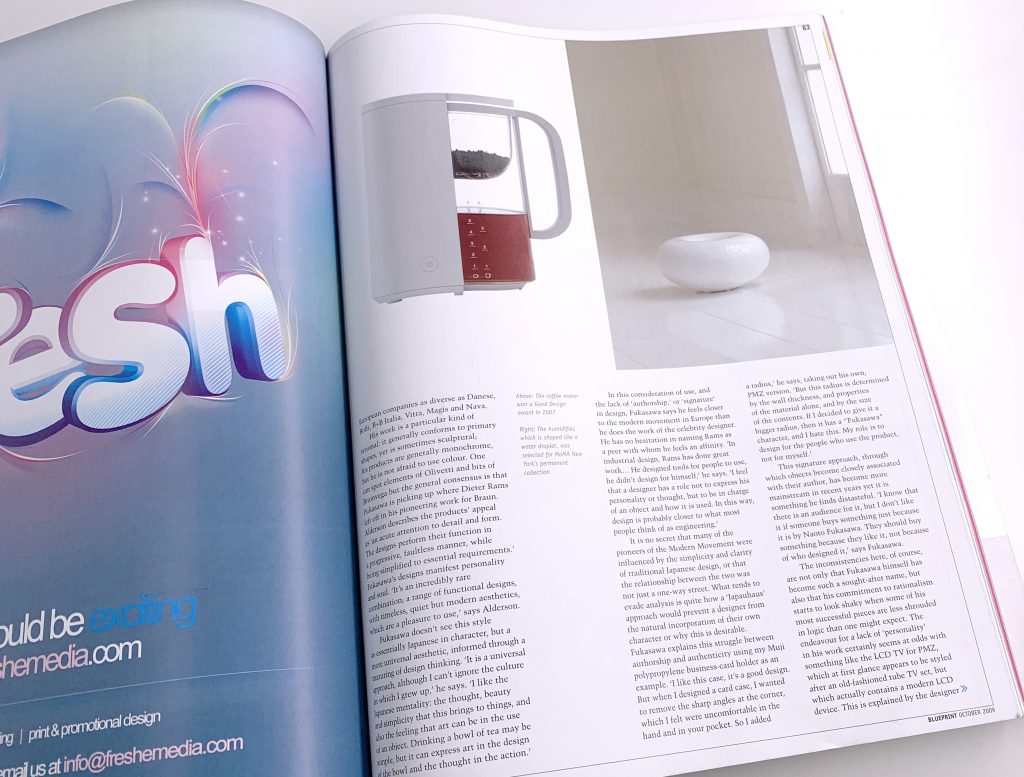
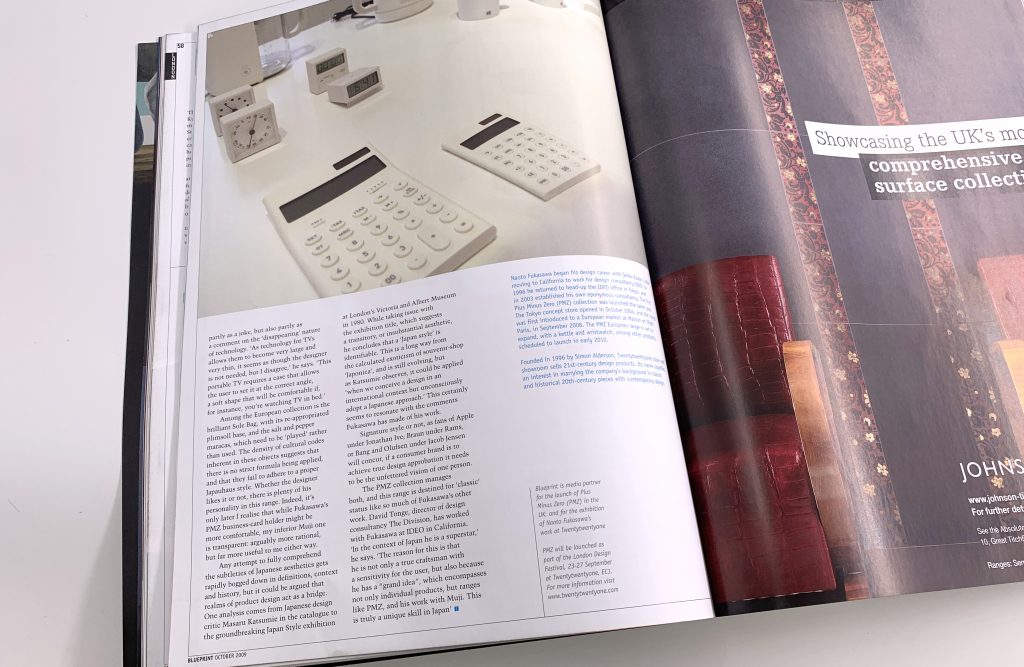
Plus Minus Zero 23 – 27 September 2009
twentytwentyone showroom, 18c River Street, London EC1R 1XN
Images:
naotofukasawa1.JPG Naoto Fukasawa (photo: Ben Hughes)
plusminuszeroproductrange1.JPG Plusminuszero range (photo: Ben Hughes)
plusminuszeroproductrange2.JPG Plusminuszero range (photo: Ben Hughes)
plusminuszeroproductrange3.JPG Plusminuszero range (photo: Ben Hughes)
SEIKO_Cone GrindingNaotoFukasawa.jpg Cone Grinding Watch by Naoto Fukasawa for Seiko (photo: Courtesy of Seiko)
solebag1.jpg Sole tote bag by Naoto Fukasawa for Plusminuszero (photo: Courtesy of Plusminuszero)
FukasawaCardCase1.jpg Card case by Naoto Fukasawa for Plusminuszero (photo: Courtesy of Plusminuszero)
FukasawaCardCase2.jpg Card case by Naoto Fukasawa for Plusminuszero (photo: Courtesy of Plusminuszero)
fukasawatv.JPG LCD TV by Naoto Fukasawa for Plusminuszero (photo: Ben Hughes)
Calculator M, Plus Minus Zero, twentytwentyone.jpg (photo: PMZ, Twentytwentyone)
Heater, red, Plus Minus Zero, twentytwentyone.jpg (photo: PMZ, Twentytwentyone)
Humidifier, Plus Minus Zero, twentytwentyone.jpg (photo: PMZ, Twentytwentyone)
logo reglations2.pdf
Plus Minus Zero, coffee-tea w, twentytwentyone.jpg (photo: PMZ, Twentytwentyone)
Plus Minus Zero, coffee-tea, twentytwentyone.jpg (photo: PMZ, Twentytwentyone)
PMZ logo.jpg
PMZ logo.ai
wallclock1.jpg (photo: Courtesy of Plusminuszero)
wallclock2.jpg (photo: Courtesy of Plusminuszero)
